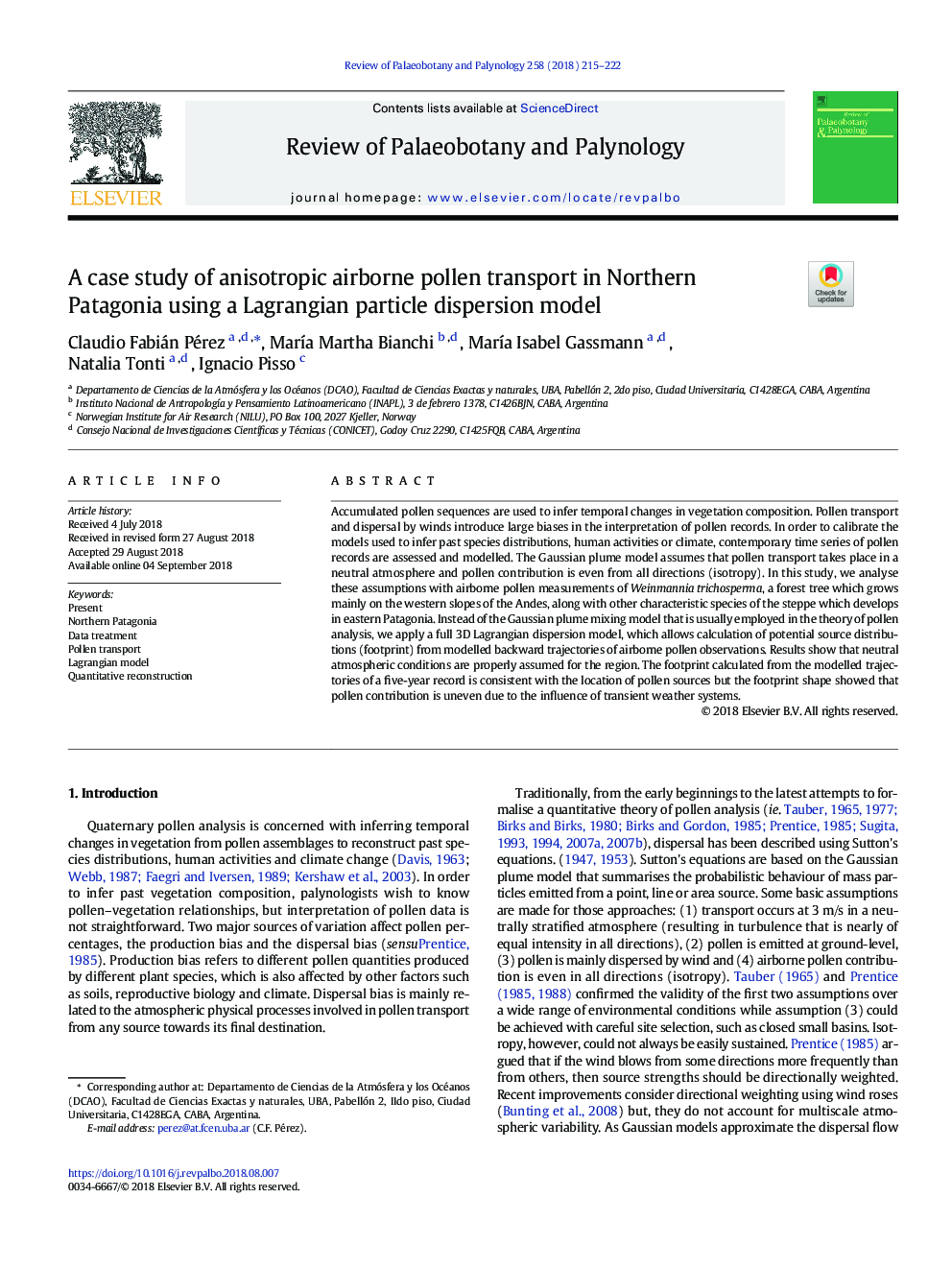| Article ID | Journal | Published Year | Pages | File Type |
|---|---|---|---|---|
| 10122019 | Review of Palaeobotany and Palynology | 2018 | 8 Pages |
Abstract
Accumulated pollen sequences are used to infer temporal changes in vegetation composition. Pollen transport and dispersal by winds introduce large biases in the interpretation of pollen records. In order to calibrate the models used to infer past species distributions, human activities or climate, contemporary time series of pollen records are assessed and modelled. The Gaussian plume model assumes that pollen transport takes place in a neutral atmosphere and pollen contribution is even from all directions (isotropy). In this study, we analyse these assumptions with airborne pollen measurements of Weinmannia trichosperma, a forest tree which grows mainly on the western slopes of the Andes, along with other characteristic species of the steppe which develops in eastern Patagonia. Instead of the Gaussian plume mixing model that is usually employed in the theory of pollen analysis, we apply a full 3D Lagrangian dispersion model, which allows calculation of potential source distributions (footprint) from modelled backward trajectories of airborne pollen observations. Results show that neutral atmospheric conditions are properly assumed for the region. The footprint calculated from the modelled trajectories of a five-year record is consistent with the location of pollen sources but the footprint shape showed that pollen contribution is uneven due to the influence of transient weather systems.
Keywords
Related Topics
Physical Sciences and Engineering
Earth and Planetary Sciences
Palaeontology
Authors
Claudio Fabián Pérez, MarÃa Martha Bianchi, MarÃa Isabel Gassmann, Natalia Tonti, Ignacio Pisso,
